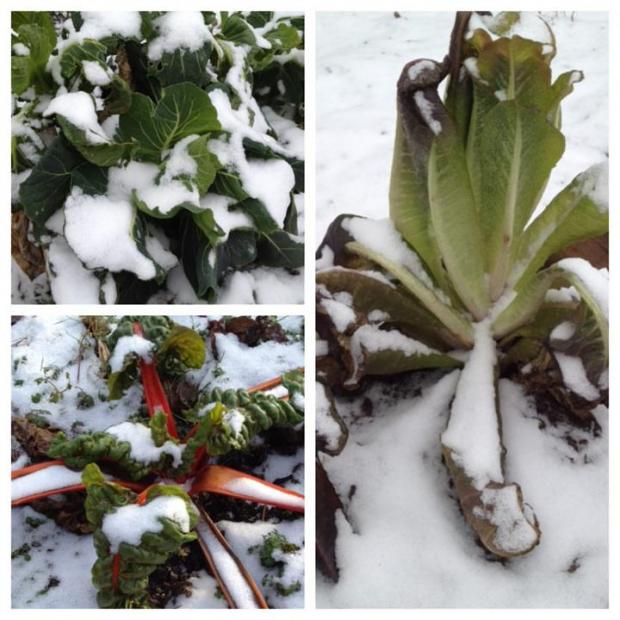
Jo-Ann Canning, a long time Vancouver Master Gardener, has provided several Overviews for Winter Vegetables categories:
1) Greens: Winter greens bring variety and zest to our cold weather meals. They've been cultivated for thousands of years from Japan to Western Europe and, as the above list shows, the majority are from the Brassica genus. Most of the European greens are fully hardy in our mild coastal climate. Some, notably chard and spinach, are tender but will over-winter with protection. All, except the lettuces, are used in soups, stews, as side dishes and in casseroles, or like cabbage, are pickled before use.
The taste – not to mention the nutritional value – of raw food in winter cannot be overstated. A group of European greens that evolved primarily in Italy and France can be eaten either raw or cooked. Examples are: arugula, spinach, chard, kale, radicchio, Italian dandelion, and endive. These, along with the winter lettuces and mache, are staples in our winter salads. ( click here for more info)
2) Roots such as carrot, parsnip, beet, celery etc, have been our primary source of carbohydrates for over 7,000 years. Because they were easy to gather and store, the soil that was disturbed and thus enriched by Palaeolithic hunter-gatherers engendered the first farming practices in Europe, Africa, and Eurasia. Roots define the taste of winter: they are roasted, boiled, sautéed. They give 'bottom' and sweetness to soups and stews. Whereas the New World and the tropical climates have given us summer's annuals, like potato, sunchoke, and sweet potato, the winter garden's roots are all biennials, except for scorzonera. Most roots need to be cooked to make their high-energy starch digestible though a few, most notably onions, are nutritious raw. ( Click here for more info)
3) Brassicas: Asian radish, Broccoli, sprouting broccoli, Broccolini, Brussels sprouts, cabbage, canola,cauliflower, collards, Chinese broccoli, Chinese greens, Chinese lettuce, choi sum, dia gai choi, gai lan,haukurei, kale, and kohlrabi... to name a few ( click here for more info)
This is a genus of the mustard family (Brassicaceae), hence the name, ‘Brassica’. As the list of
common names indicates, the genus probably represents the most diverse of all our food crops. It is also, arguably, the most important. Brassicas are hardy inland as well as on the coast. Full of nutrition and minerals, they are reliable producers with many heritage varieties to choose from. With the exception of Canola, a summer crop grown for seed oil, all are found in the winter garden. The Brassica genus has been cultivated for thousands of years in the Mediterranean, Northern Europe, the Indian sub-continent, the Near East, Ethiopia, and Asia. References found in Sanskrit writings from 2,000 B.C., tell us the wild seeds were gathered for lamp oil and used in soap making.
Cabbage and kale were favoured by the Greeks and Romans, and wild cabbages still grow on the maritime cliffs there. Turnips were cultivated in Western Europe as early as the 1300s. Few people develop allergies to any of the Brassicas. We eat the stalks, leaves, swollen stems, roots, seeds, and flowers. We eat them raw, cooked, and pickled. They are annuals and biennials, and we harvest the biennials at both stages in their life cycle. We eat the Brassicas in autumn, all through winter, and over-wintered varieties when they sprout in early spring. We cultivate the fastergrowing cultivars as early spring salad and cooked greens as well as late season greens. Certain varieties make good green manure, while others (kale, rape) are used as green fodder because grazed tops re-grow readily
The name winter vegetables can be confusing as most of these plants need to be started in summer and set out in your garden long before frost sets in. We hope this information encourages you to seek out some of these veggies you have not tasted before; many are also available in local farmer's markets. .
Click HERE for some wonderful photos and interesting comments by Jo and other MGs
Attached are the following pdf's for your reading:
| Attachment | Size |
|---|---|
| 30.48 KB | |
| 30.63 KB | |
| 30.36 KB |




